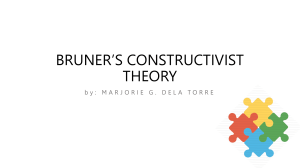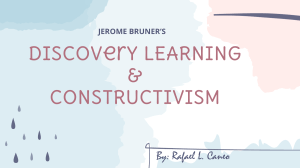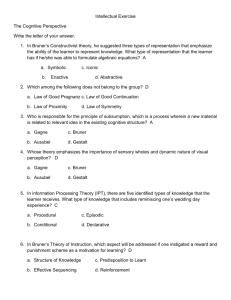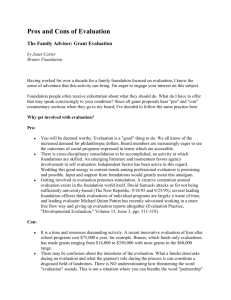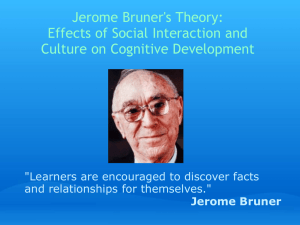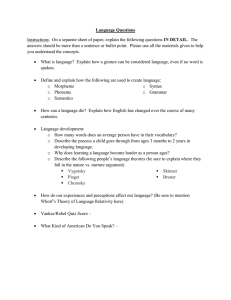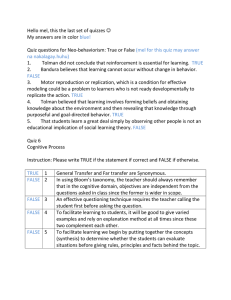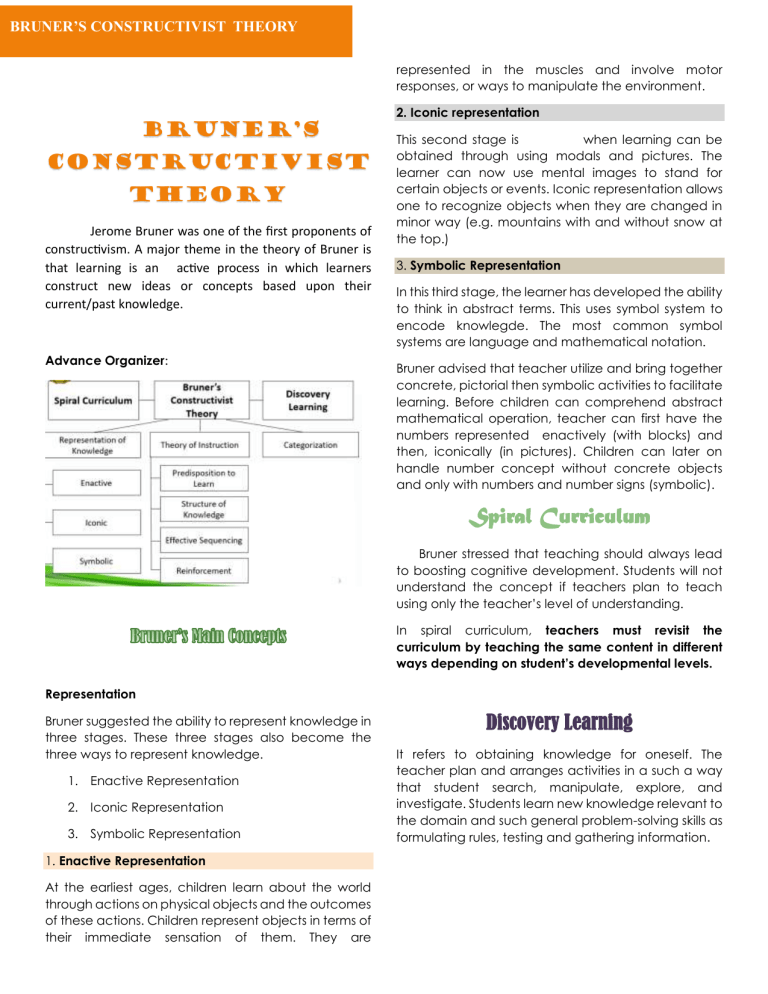
BRUNER’S CONSTRUCTIVIST THEORY represented in the muscles and involve motor responses, or ways to manipulate the environment. BRUNER’S CONSTRUCTIVIST THEORY Jerome Bruner was one of the first proponents of constructivism. A major theme in the theory of Bruner is that learning is an active process in which learners construct new ideas or concepts based upon their current/past knowledge. Advance Organizer: 2. Iconic representation This second stage is when learning can be obtained through using modals and pictures. The learner can now use mental images to stand for certain objects or events. Iconic representation allows one to recognize objects when they are changed in minor way (e.g. mountains with and without snow at the top.) 3. Symbolic Representation In this third stage, the learner has developed the ability to think in abstract terms. This uses symbol system to encode knowlegde. The most common symbol systems are language and mathematical notation. Bruner advised that teacher utilize and bring together concrete, pictorial then symbolic activities to facilitate learning. Before children can comprehend abstract mathematical operation, teacher can first have the numbers represented enactively (with blocks) and then, iconically (in pictures). Children can later on handle number concept without concrete objects and only with numbers and number signs (symbolic). Spiral Curriculum Bruner stressed that teaching should always lead to boosting cognitive development. Students will not understand the concept if teachers plan to teach using only the teacher’s level of understanding. In spiral curriculum, teachers must revisit the curriculum by teaching the same content in different ways depending on student’s developmental levels. Representation Bruner suggested the ability to represent knowledge in three stages. These three stages also become the three ways to represent knowledge. 1. Enactive Representation 2. Iconic Representation 3. Symbolic Representation 1. Enactive Representation At the earliest ages, children learn about the world through actions on physical objects and the outcomes of these actions. Children represent objects in terms of their immediate sensation of them. They are Discovery Learning It refers to obtaining knowledge for oneself. The teacher plan and arranges activities in a such a way that student search, manipulate, explore, and investigate. Students learn new knowledge relevant to the domain and such general problem-solving skills as formulating rules, testing and gathering information . BRUNER’S CONSTRUCTIVIST THEORY 4. The fourth rule sets acceptance limits on attributes Bruner (1966) states that a theory of instruction should address four major aspects; 1.Predisposition to learn. He introduced ideas of “readiness for learning”. Bruner believed that any subject could be taught at any stage of development in a way that fits the child’s cognitive abilities. 2. Structure of Knowlegde. This refers to the ways in which a body of knowlegde can be structured so that it can be most readily grasped by the learner. Bruner viewed categorization as a fundamental process in the structuring of knowledge. 3.Effective sequencing . No one sequencing will fit every learner, but in general, the lesson can be presented in increasing difficulty. Sequencing, or lack of it, can make learning easier or more difficult. 4.Reinforcement. Rewards and punishment should be selected and placed appropriately. He investigate motivition of learning. Categorization Bruner gave much attention to categorization of information in the construction of internal cognitive maps. He believed that perception, conceptualization, learning, decision making and making inferences all involved categorization. Categories are “rules” that specify four thing about objects. The four things are: 1. Criterial Attributes – required characteristics for inclusion of an object in a category. 2. The second rule prescribes how the criterial attributes are combined 3. The third rule assigns weight to various properties 1. Identity categories - categories include objects based on their attributes or features. 2. Equivalent categories - (provide rules for combing categories). Equivalence can be determined by affective criteria, which render objects equivalent by emotional reaction, functional criteria, based on related function (for example, “car”, “truck”, “van” could all be combined in an inclusive category called “motor vehicle” ) or by formal criteria, for example by science, law or cultural agreement. 3. Coding system are categories that serve to recognize sensory input. They are major organizational variables in higher cognitive functioning. Going beyond immediate sensory data involves making inferences on the bais of related categories . Related categories form a “coding system”. These are heirachical arrangement of related categories.
